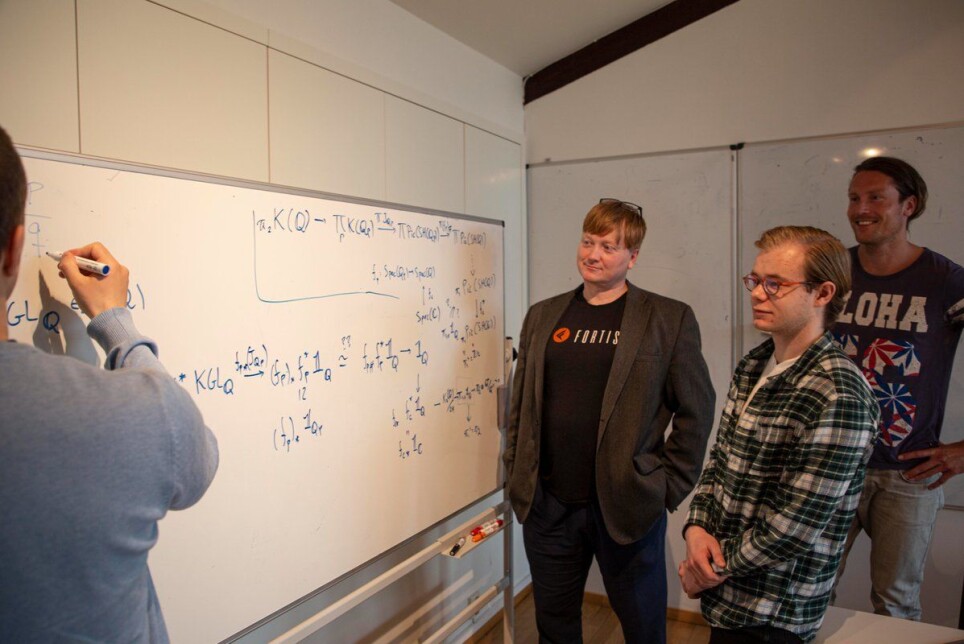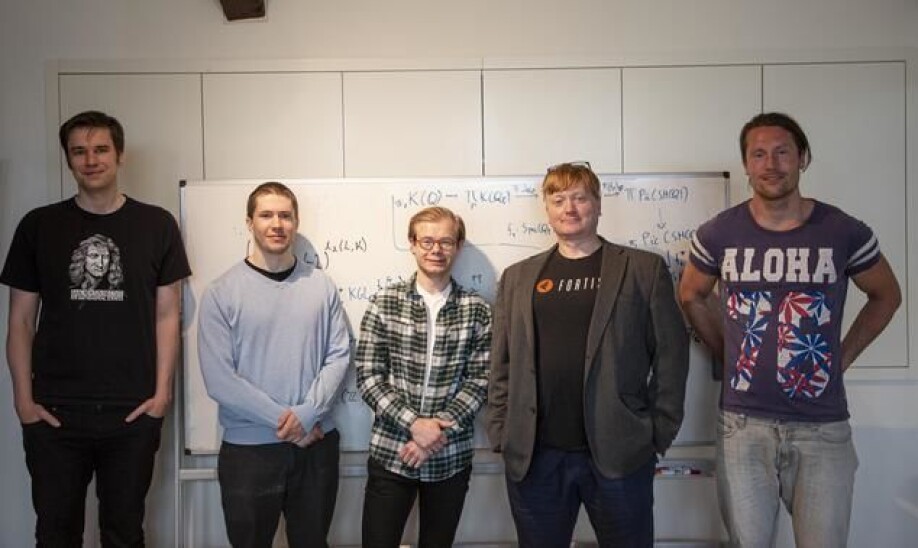THIS ARTICLE/PRESS RELEASE IS PAID FOR AND PRESENTED BY The Centre for Advanced Study (CAS) - read more

Understanding mathematical motives
Researchers at the Centre for Advanced Study have contributed to advancing the rapidly developing field of motivic geometry during their year at the Centre.
“We can describe much of what we observe in the universe by using equations,” said Paul Arne Østvær, professor of mathematics at the University of Oslo (UiO).
Østvær has led the project Motivic Geometry at CAS during the 2020/2021 academic year. Motivic geometry is a rapidly developing field of research in pure mathematics that studies the motives of mathematical objects by combining motivic homotopy theory, affine algebraic geometry and enumerative geometry.
“The goal is to capture all the information about a given object that one can imagine by studying its motive,” Østvær explained. “If you know the motive, then you know everything about the object.”
The project represents a new direction in mathematics.

“No one has tried to do what we’ve done this year before,” Østvær said. “That’s also the reason why we’re doing it, and why it’s so interesting. Being at the forefront of research that takes this field further is incredibly exciting.”
When he arrived at CAS, Østvær described three goals for the project: to solve central computational problems, enhance counting techniques in algebraic geometry and lay the foundation for new research directions.
We sat down with the project leader and members of his research group to hear what they have discovered during their year at CAS.
Solid progress toward the formulation of a motivic Poincaré conjecture
The project has evolved around three main pillars: developing the mathematics leading to a formulation of a motivic Poincaré conjecture, developing systematic approaches to computing the homotopy of motivic spheres and enabling future research.
“We have made progress on all three pillars,” Østvær said. “The project’s main focus, which is also the most ambitious part, is to formulate a motivic Poincaré conjecture. Here we have taken the first solid steps toward the formulation of the conjecture.”
The group’s work on developing a motivic Poincaré conjecture is based on the topological Poincaré conjecture, formulated in 1904 by the French mathematician Henri Poincaré, and its proof, which was formulated nearly 100 years later.
“We’re trying to make a Poincaré conjunction for smooth affine varieties,” Østvær said. “This work takes time to develop and builds on knowledge accumulated over centuries, going all the way back to antiquity.”
The group has published their work to develop a motivic Poincaré conjecture in the article Stable motivic homotopy theory at infinity, which is available on the open-access repository arXiv.
“The techniques we have developed together with the scholars Frédéric Déglise and Adrien Dubouloz in the stable motivic setting are solid and promising,” Østvær said. “Some computational tools may indeed help us formulate a Poincaré conjecture in unstable motivic homotopy theory. The next step is to transition from the stable to the unstable setting, and then test the hypothesis on selected examples.”
A different year at CAS
The coronavirus pandemic restrictions have had consequences for the project’s work at CAS — mainly by preventing international researchers from travelling to CAS to join the project. During the autumn semester, the research group included three visiting scholars from Germany, and during the spring semester, one scholar from Switzerland was present at the Centre. Østvær had planned to host many more.
“Since so few international scholars could come to Oslo, I have been able to include Ph.D. students and young researchers from my department at the University of Oslo,” Østvær said. “It has been great to have them here.”
The younger project participants have worked closely with the handful of international scholars present at CAS, and with scholars who have participated digitally.
“This project at CAS has given us a unique opportunity to work with and learn from professors and experienced researchers in our field,” said project participant Ola Sande, a Ph.D. candidate at UiO. “It has been quite spectacular for us to collaborate and get feedback from them.”
The group has done more than just mathematics during the year at CAS.
“We’re all powerlifters — it’s almost a requirement to join the project — and we do push-up contests together before online seminars,” Østvær said. “We also like cake, and it’s much appreciated when someone brings it to work.”

Digital solutions in pandemic times
Because of the pandemic restrictions, the project group has organised digital seminars every Wednesday. In total, there have been around 50 seminars.
“This has been a positive experience, and it has made our project known to colleagues around the world,” Østvær said.
“We have had many participants at the weekly seminars,” said project participant Nikolai Thode Opdan, a master’s degree student at UiO. “They have made the research more accessible, and we have reached out to more scholars in our field than we would have if the seminars had been only for the scholars present at CAS.”
Recordings of the seminars can be found on the project group’s YouTube channel, which has more than 170 subscribers.
“This makes it possible to watch the seminars again or watch them at a time that suits you if you missed them live,” said project participant and Dr. Håkon Kolderup.
Future work
CAS has extended the funding for the 2020/2021 projects due to the pandemic.
“We are delighted to have been given more time,” Østvær said. “We hope to deliver good results next academic year as well, and we are looking forward to this opportunity.”
Østvær is planning a conference in Oslo in August-September 2022 that will mark the end of the Motivic Geometry project. However, Østvær has also received funding from the Norwegian Research Council to continue his work on motivic homotopy theory with the project Equations in Motivic Homotopy (EMOHO).
Reference:
Adrien Dubouloz et.al.: Stable motivic homotopy theory at infinity. arXiv.or, 2021.
See more content from The Centre for Advanced Study:
-
Electrons, laser pulses and the properties of matter
-
Dissecting the current debates on prehistoric migration
-
Politics, law and society in the High Middle Ages
-
Which parts of language are universal and present in signed and spoken languages, and which depend on the channel of communication?
-
Mother-to-child microbial transmission: important for human health and challenged by modern lifestyle
-
What is the role of morality, democracy and experts in policymaking?





































